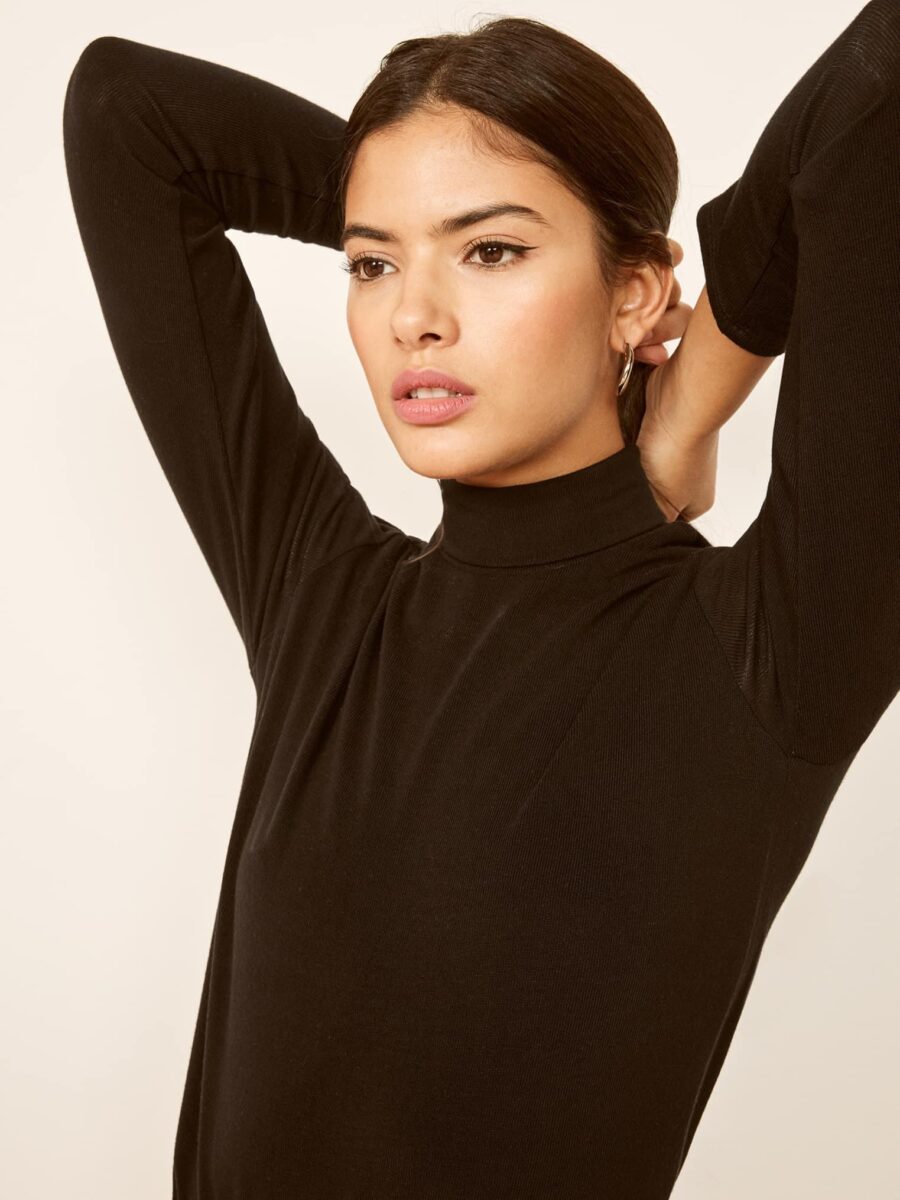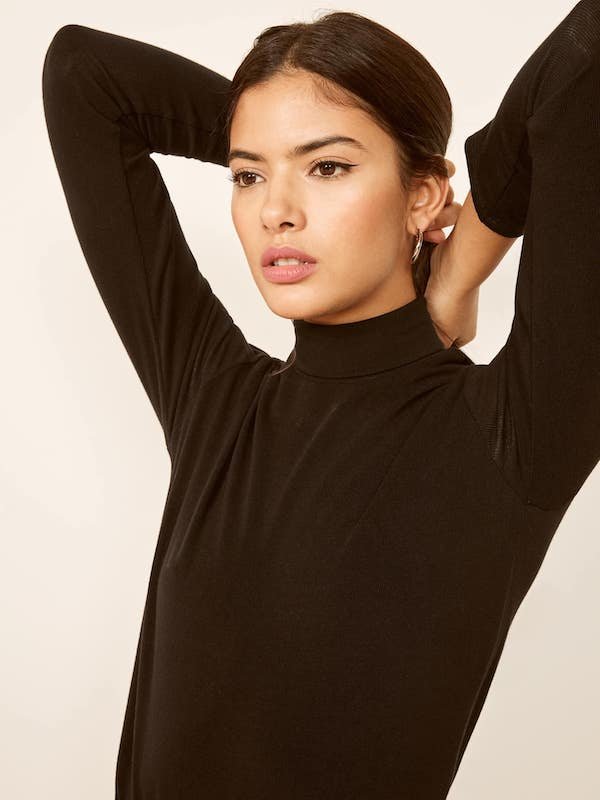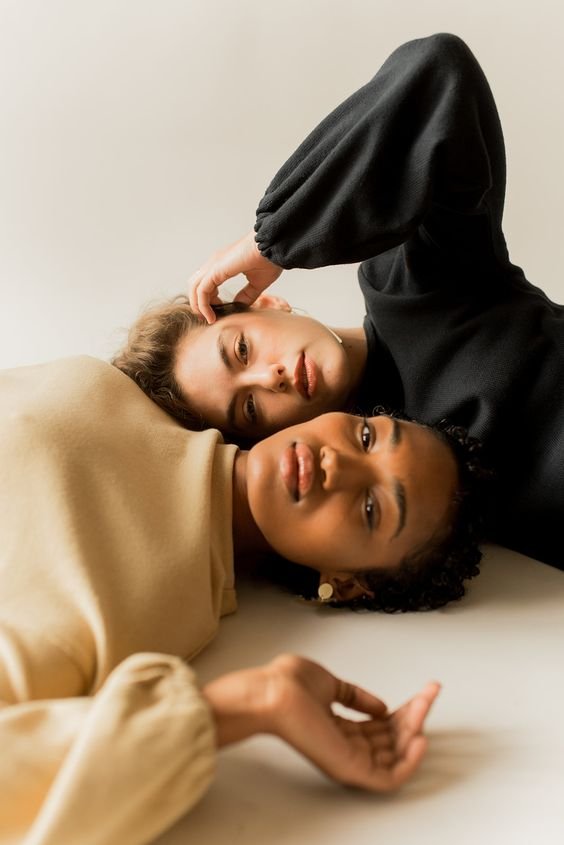
The Radical History & Psychology Of Turtlenecks
Turtlenecks Through The Years
Turtlenecks have been a staple item of western closets for years now. While they seem to be predominantly worn by women, everyone gets in the turtleneck game once winter comes around.
“Turtlenecks have been symbols of strength, rebellion, style, and modesty throughout history.”
Since I live in Southern California, I don’t get a ton of chances to don one, however, I jump at any chance I can get (even if it just means the temperature dropped below 70 degrees.) Wearing a turtleneck makes me feel chic and strong. The garment feels at once modest and sexy. These associations make so much sense once put into context with the popular item’s history. Turtlenecks have been symbols of strength, rebellion, style, and modesty throughout history.
First worn consistently in the 19th century, turtlenecks were pieces mostly for the working class due to their practicality. The Navy, fishermen, and other laborers wore this garment for warmth and protection. In 1860, polo players began dressing in them while playing, and thus the turtleneck got its original name: the “polo neck.” The turtleneck has since been the most common name for the sought-after article of clothing, though it can still sometimes be referred to as the polo neck across the pond.
For the rest of the 19th century, the piece was reserved for working men and polo players, however it crossed over to women’s fashion in the early 20th century with the rise of the “Gibson Girl.” This fictional character, has been described as “the visual ideal” from 1890 to 1920. The look prominently featured a high neckline and was associated with a beautiful, active, and independent woman.
“The turtleneck went from a working man’s uniform to a bombshell’s seductive style.”
Our subject stayed within the most extreme ends of the class system until the 1920s, when it was popularized among the middle class by playwright Noël Coward. And this is when things start to get interesting, as well as more in line with how we see the clothing piece today. In the 1940s and 1950s the modern day iconic silhouette of the item was formed and worn most notably by Jayne Mansfield. The turtleneck went from a working man’s uniform to a bombshell’s seductive style.
Fast forward a couple of years and Audrey Hepburn is bringing the “beatnik” or “bohemian” look to the public in her famous film Funny Face. ‘The pullover with a high collared neck still has a powerful allure that communicates, “I’m different,”’ Hepburn says in the movie, solidifying the turtleneck’s growing association with ‘radical academics, philosophers, artists and intellectuals.’.
Its connection to the anti-mainstream only grew in the 70s. Feminist activists like Dorothy Pitman Hughes and Gloria Steinem, as well as groups such as the Black Panthers donned these shirts. Turtlenecks provided a style that was both uniform and unique at the same time.
After an eventful decade as a staple of the resistance, the clothing item had a bit of a resting period in the 1980s. This decade saw the garment become “uncool” and swiftly moved into the background as just another basic. This lasted into the 90s with the notable exception of an infamous Gap campaign, and hip hop “artists” like Dwayne “the Rock” Johnson.’ The campaign did not feature him, but his turtleneck style was infamous in the 90s.
“The turtleneck created a costume that was both anti-establishment, yet not distracting from the work that they were doing.”
The turtleneck’s reputations of anti-establishment, and being a bit nerdy, married in the form of Steve Jobs’s daily outfit. Although I don’t agree that it was a ‘deliberate choice’ on Jobs’s part to wear an item of clothing that holds a contentious history, it does definitely fit into the narrative that turtlenecks are worn and represent those who color outside the lines. I would muse that Jobs was drawn to the article of clothing for the same reasons activists were in the 70s. These individuals meant business but didn’t actually want to be in business—and the turtleneck created a costume that was both anti-establishment, yet not distracting from the work that they were doing.
Somewhere in the mid-2000s turtlenecks became a symbol of modesty and prudency. They were worn by children and conservative adults, a metaphor for their lifestyle or person beliefs. However, a bit later, “normcore” hit the scene and 90s fashion had a full revival, thus making the uncool garment cool again. Today, like most clothing pieces, the turtleneck has many associations and iterations. Though, the classic black, long-sleeved version will always have a certain allure and appeal far beyond practicality.
When we get dressed every day, we often don’t consider the historical context of each piece. The other day I wore a new-to-me striped turtleneck, feeling so cozy and cool! Little did I know that I was carrying years of radical history with me as I went about my day. I believe conscious fashion is more than understanding where our clothing physically came from, but how it has travelled through time to land in our closets today. Being a more thoughtful shopper includes giving a holistic look at the stories behind each piece we acquire. To me, it is so exciting to know what events occurred throughout history in order to make me choose a garment now.
Things do happen by chance, but fashion is not one of them.
“Conscious fashion is more than understanding where our clothing physically came from, but how it has travelled through time to land in our closets.”
Audrey Stanton was born and raised in the Bay Area and is currently based in Los Angeles. She works as a freelance writer and content creator with a focus in sustainable fashion. Audrey is deeply passionate about conscious living and hopes to continue to spread awareness of ethical consumption.
RELATED READING
Featured image of Reformation’s Billy Sweater




